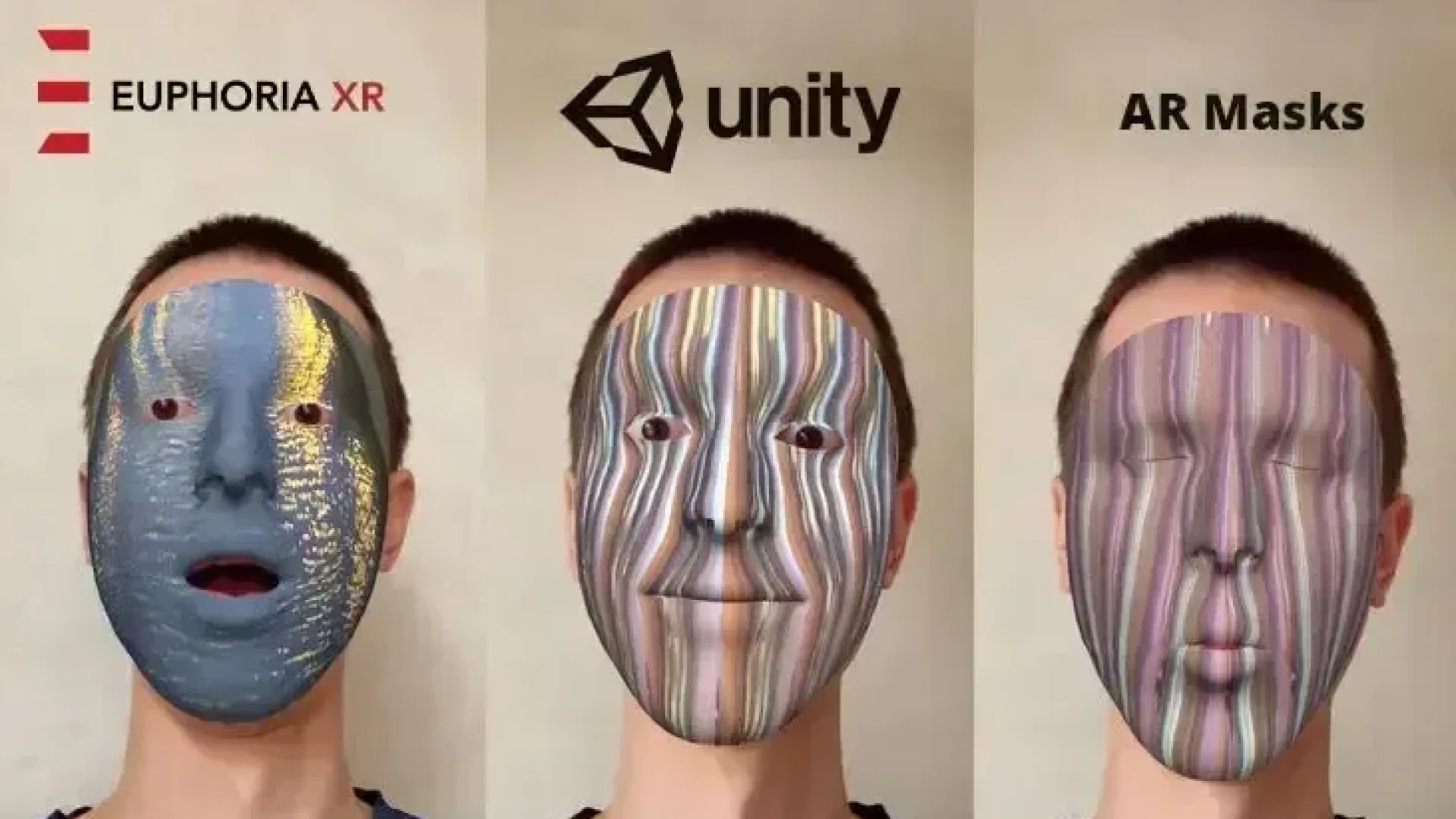Augmented Reality (AR) technology has come a long way from its early days of being used primarily for gaming and entertainment. Today, AR is being used more and more in the marketing industry as a powerful tool to engage with customers and promote brands. AR filters are one such example of this, and they have proven to be particularly effective in attracting and retaining customer attention.
To achieve success with AR marketing, businesses need to have a well-defined plan in place. As a Top AR Development Company, we suggest that companies should consider implementing an AR filter effects strategy to create marketing campaigns that are captivating, memorable, and effective in driving business growth. In this article, you can explore this approach and learn how it can help your business engage with customers in a more innovative and impactful way.
Understanding the AR Landscape
Augmented Reality technology adds digital elements to the real-world environment, creating a seamless blend between the physical and virtual realms. Unlike Virtual Reality, which places users in a completely simulated environment, AR enhances the existing reality with computer-generated enhancements that are interactive and engaging. While AR has been around since the late 20th century, it has gained significant traction in recent years, particularly in marketing. Initially used mainly in gaming and entertainment, AR has now expanded its reach and is widely used in various industries, including marketing.
The Marriage of AR and Brand Marketing
Augmented Reality (AR) filters are an excellent tool for businesses to engage with their customers creatively and uniquely. By designing interactive filters that showcase their brand, businesses can create a memorable experience for users. These filters can be applied on popular social media platforms like Instagram and Snapchat, allowing users to engage with the brand in a fun and playful way. This can help businesses to not only increase brand awareness but also drive user engagement and boost sales.
Getting Started: Incorporating AR Filters
Choosing the Right AR Filters
The world of AR filters is growing rapidly with new filters being added every day. With this vast array of filters available, it can be overwhelming to choose the right ones for your brand and campaign objectives. To make the most out of your AR filters, it’s important to understand how they align with your brand identity and campaign goals. This will ensure that you are selecting the right filters that not only look great but also resonate with your target audience and help achieve your marketing objectives. So, exploring the different AR filter effects available, experimenting with them, and seeing how they can help enhance your brand’s message and engage your audience in a fun and interactive way is the key.
Integration into Marketing Strategy
Augmented Reality (AR) filters offer a new and exciting way to engage with audiences. Brands are increasingly using AR filters as part of their marketing campaigns to create interactive and engaging experiences for their customers. However, to truly make the most of AR filters, it’s important to understand how they can be integrated into an overarching marketing strategy.
The first step is to identify the channels where AR filters can be incorporated. This might include social media platforms like Instagram and Snapchat, as well as branded apps and websites. Once you have identified the channels, it’s important to understand the nuances of incorporating AR filters into each one. For example, an AR filter used on Instagram may need to be designed differently than one used on a branded app.
The key is to ensure that the AR filters are consistent with your brand identity and messaging. They should also provide a seamless experience for users across all channels. This means that users should be able to recognize your brand and messaging whether they are using an AR filter on Instagram or a branded app. By incorporating AR filters into your overarching marketing strategy, you can create a cohesive brand experience that engages and delights your customers. This can lead to increased brand awareness, customer loyalty, and ultimately, sales.
Crafting Engaging AR Campaigns
Augmented Reality (AR) is a powerful tool that can be used to create engaging and interactive experiences for users. One of the ways that brands are leveraging this technology is through interactive storytelling. With AR filters, brands can tell their stories in a more immersive way, allowing users to become part of the story and experience it firsthand. These filters can be used on social media platforms like Instagram, Snapchat, and TikTok AR filters to create immersive brand experiences that are both fun and interactive. By embracing the transformative power of social media AR filters, brands can create memorable experiences that will leave a lasting impression on their customers.
For example, a travel company may use AR to allow users to explore different destinations, giving them a taste of what it would be like to travel there. By doing so, the brand is effectively telling a story about its products and how they can enhance a person’s appearance.
Another way that brands are using AR is by incorporating gamification into their marketing strategies. By turning brand interactions into a game, brands can increase user engagement and brand recall. A virtual universe where people can interact with each other and digital objects in real time. Brands that can effectively leverage the metaverse will be able to create entirely new possibilities for customer engagement and brand experiences. This not only creates a fun experience for users but also encourages them to visit the restaurant in person.
AR Analytics: Measuring Success
Despite Augmented Reality (AR) being a powerful tool for marketers but measuring the success of AR campaigns can be challenging without the right metrics and KPIs in place.
To effectively evaluate the performance of your AR marketing efforts, it’s important to identify the key metrics that matter most to your business goals. Some common KPIs for AR Campaigns include engagement rate, time spent interacting with the AR experience, number of shares or social media mentions, and conversion rate.
In addition to tracking these KPIs, it’s also important to understand how AR can contribute to your conversion tracking efforts. By incorporating AR into your sales funnel, you can measure its impact on lead generation, customer engagement, and overall sales conversion rates.
To measure the ROI of your AR campaigns, you can use a variety of methods such as A/B testing, survey feedback, and tracking website traffic and sales data. By analyzing these metrics, you can gain insights into the effectiveness of your AR marketing strategies and make data-driven decisions to improve future campaigns.
Challenges in AR Marketing
High Development Costs:
Creating augmented reality (AR) filters can require a significant amount of time, effort, and resources, which can ultimately lead to higher costs. This is because developing high-quality AR filters typically involves a combination of skills, such as 3D modeling, animation, programming, and graphic design. Additionally, the process of testing, debugging, and optimizing filters for different devices and platforms can also contribute to the overall cost. As a result, many individuals and businesses may need to carefully consider their budget and resources before embarking on an AR filter development project.
Technical Compatibility:
Augmented Reality (AR) filters are becoming increasingly popular on social media platforms such as Instagram and Snapchat. However, ensuring that these filters work seamlessly across different devices and platforms can be a challenge. This is because different devices may have different specifications, such as cameras with varying resolutions and processing power. Different platforms also have their own requirements and limitations. Therefore, developers must take into account these differences and optimize the AR filters accordingly to ensure that they work as intended regardless of the device or platform used. This requires a deep understanding of the technical aspects of AR, as well as the ability to test and troubleshoot across multiple devices and platforms. Ultimately, the goal is to provide users with a consistent and enjoyable AR experience, regardless of the device or platform they are using.
User Engagement and Adoption:
Encouraging users to engage with AR filters can be challenging because it requires them to take some extra steps in order to experience the filter. Unlike static images or videos, AR filters require users to have access to a camera and a social media app that supports AR features. Additionally, some users may be hesitant to try new features or may not be aware of how to use AR filters. To overcome these challenges, it’s important to clearly communicate the benefits of using AR filters and to make the process of accessing and using them as simple as possible. This can include providing clear instructions on how to use the filter, showcasing examples of the filter in action, or even offering incentives for users who engage with the filter.
Data Privacy and Security:
In today’s digital era, handling user data responsibly and ensuring its security is of utmost importance. It is essential to comply with data protection regulations and maintain confidentiality to gain the trust of users. As an organization, it is crucial to implement robust security measures to safeguard sensitive user data from unauthorized access, theft, or misuse. This involves securing data both during storage and transmission, conducting regular security assessments, and providing training to employees on data handling best practices. By prioritizing responsible data handling and security, organizations can foster a culture of trust and transparency with their users.
Future Trends: Delving into AR Advancements with Euphoria XR
Augmented reality (AR) is rapidly advancing, and it is becoming increasingly important for brands to stay on top of the latest technological advancements in this field to remain relevant and competitive. By incorporating AR technology into their marketing strategies, brands can create interactive and engaging experiences for their customers that leave a lasting impression.
Euphoria XR, a Leading AR/VR Game Development Company, stands at the forefront of the metaverse’s dynamic evolution, actively contributing to its expansive growth and influencing how we engage with the world. Beyond a mere technological leap, we view AR development as a cultural and societal phenomenon poised to revolutionize our lifestyles, work environments, and recreational activities.
Our commitment extends to exploring the metaverse’s possibilities, anticipating novel applications that will reshape industries and unlock unprecedented opportunities for advancement. With the AR development emerging as a pivotal force in shaping our future, Euphoria XR remains dedicated to being an integral part of this revolutionary wave, continuously pushing boundaries and contributing to the transformative impact of the metaverse on our lives. In short, the possibilities for brand marketing in the world of AR are endless. By staying ahead of the curve and embracing the latest technological advancements, brands can create innovative and engaging experiences that leave a lasting impression on their customers.















